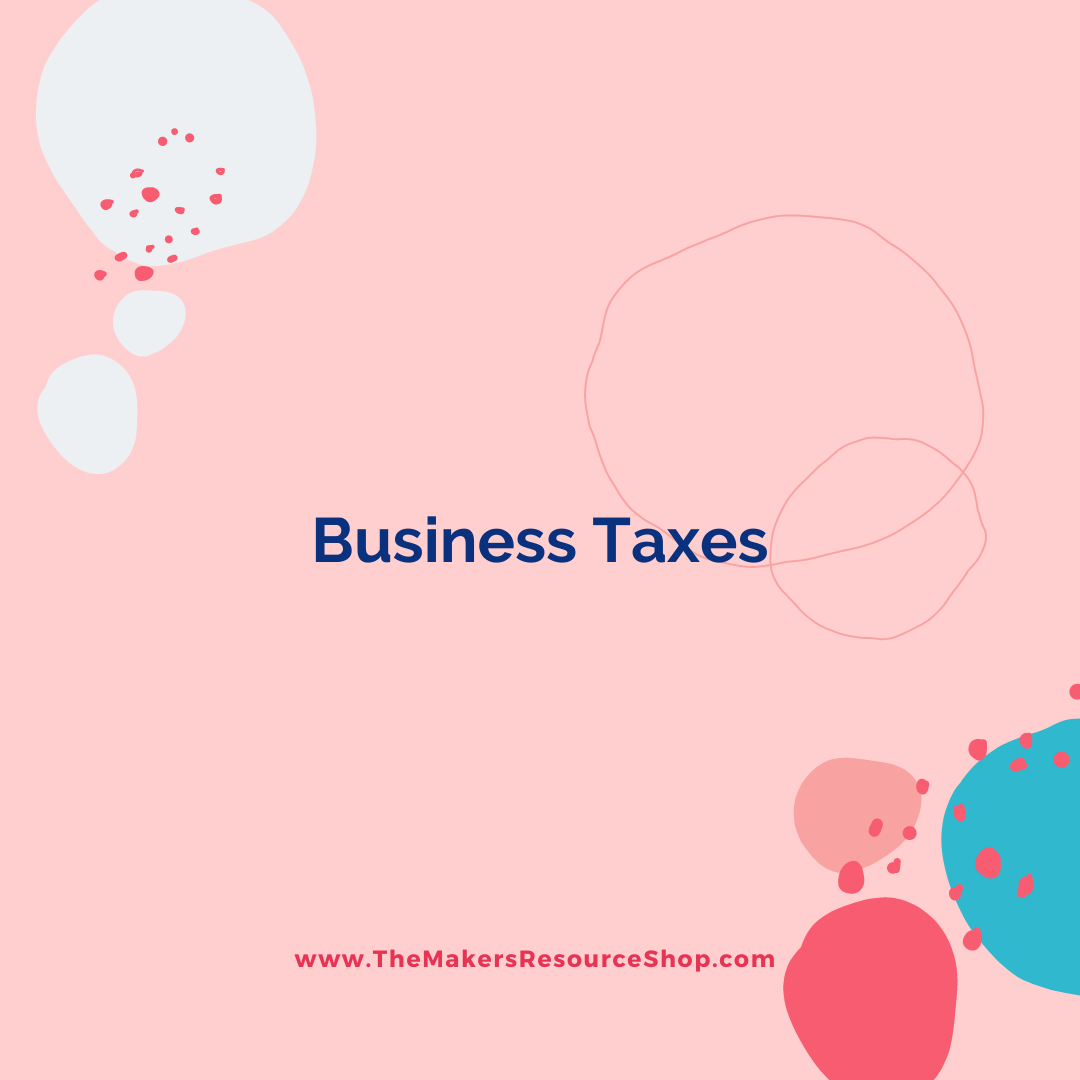
Business Taxes
There are many, many, many types of taxes out there and they can get very confusing very quickly. Here's what you can expect.
Sales & Use Tax
Your state likely will have Sales and Use tax. You must register for this before collecting any sales tax from your in-state customers. If you have a show out of state, you will need to get a temporary sales tax ID from the state you are having the show in. This is called a Physical Nexus.
Some states consider certain contractors, employees, and reps/affiliates to create a physical nexus meaning you'll need to register and collect for those states as well.
To start, you will only charge sales tax to customers in your own state. If you have a lot of sales to other states, you'll need to keep track as many states now have a threshold that if you meet it, you must register to collect and pay sales tax for their state too. This is called Economic Nexus.
If you sell on a marketplace like ETSY, they will automatically collect and pay this tax for you. If you are in a state in which they do this, you still need to file your sales tax report! You will simply have a lot of exempt sales. Most states will have you list your gross sales for the time frame, then list any out of state sales, then any exempt sales due to marketplace, wholesale, or other. This is how they determine what is taxable and how much you should have personally collected to pay to the state.
Sales taxes are filed at the intervals the state tells you. Some states are annual, some quarterly, and some monthly. Some states will decide your interval based on your current sales volume. If they ask for an estimate for what you will do inside the state and you are an online-only shop, say $20. If you are an in-person shop or do lots of shows in your state, say $100. These are very rough estimates and simply gives the state some information to give you a filing schedule. Once you actually have sales coming in, then they will use your filings to determine your filing schedule if it needs to change.
Sales tax is charged on many different things and most states have a list of taxable vs non-taxable products. Some states do not tax clothing, some don't tax clothing under certain circumstances, some states have tax holidays. Some states tax digital goods and photography services. Be sure you check out their lists to make sure you are covered.
With your sales tax ID, you should not be paying sales tax on any inventory component that will eventually be sold to another person. Resale items, fabric to make items for sale, beads to make items for sale, etc., these are to be tax exempt. Bring your sales tax ID with you to shops and ask if they have a form to fill out so you can get your inventory items tax exempt. When shopping online, send an email prior to purchase. If you've paid sales tax on something you shouldn't have, check your state's sale tax filing form. A few allow you to get back that sales tax as a credit or refund.
Property Tax
Check your county to see if there is property tax assessed. Not all locations have this. Those that do, will want to know the current values of everything you use to conduct business. Computers, desks, machines, shelving, storage containers, tablets, etc. Some states also assess a value to inventory. If you find that your state has property tax, check to see what is included.
Income Tax
Many states assess income tax at the same time as federal income taxes and they use the same (or very similar) forms. Because of this, we typically don't think about state income tax separately, but it is there for some states.
Federal tax, whether you are a sole proprietorship or an LLC, is done with your personal 1040. You must claim all income regardless of if it is $1, $400, $600, or $1000. You must claim all income regardless of where it comes from. Just like you get a W2 when you are an employee of an outside business, your business needs to fill out a form too. For your personal business, you will fill out the Schedule C. Think of this form as a calculation.
On this Schedule C, you will list your gross income (all pennies that came into your business), then, anything you have a receipt for, can be included in the Expenses section *except* inventory (including raw materials used to make finished products and the finished products not yet sold and shipped out). Only receipts from the year you are filing can be included in the Expenses section.
In the Cost of Goods Sold section, you will have your purchases of inventory (including raw material) if you have a receipt. On Line 35, you'll show the amount you started the year with (if this is your first ever year, this will be $0). On Line 36, you'll show the amount purchased in the year. If you don't have a receipt, the value is $0, so keep those receipts!
Any inventory still on your shelf as of Dec 31st, either as raw material or finished product, is counted and the value is placed on Line 41. The calculation of this section shows your expense of inventory allowed to be placed in Section II: Expenses. To stay as audit proof as possible, you must keep track of your inventory.
Effectively, the Schedule C is what tells the IRS your actual profit/loss. If your profit is $400+, the Schedule C will instruct you to also fill out the Schedule SE to determine if you owe any Self Employment taxes (things like Medicaid). At the end of both of these schedules, it will instruct you to place the final numbers somewhere on your personal 1040 to be accounted for alongside your other personal income. Because it is accounted for with your personal income, even if you "owe" for Self Employment taxes, you may not actually have to pay anything (usually this is because of a W2 job withholding more than needed through the year).
The IRS also has Estimated Quarterly tax simply so that they aren't receiving tons of money all at one time. You will only deal with this if you owed the IRS in the previous year AND expect to owe $1000+ for the current year. You must pay the Estimated Quarterly due in January regardless of when you complete your final tax return (effectively, pay them, then file your tax return and pay them more if needed...silly, I know).
Check out these products to help your journey.
Have you found this post to be helpful?
Please do feel free to share the link!
This blog and the free Facebook group are supported by purchases made in the shop and by donations.
